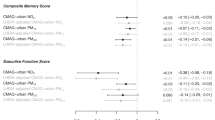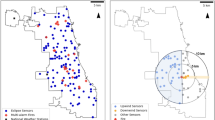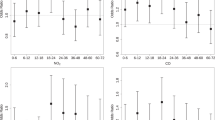Abstract
THE accompanying graph (Fig. 1) shows the hourly variation in the quantity of suspended impurity, that is, sooty matter, in the air of London (Westminster), which was chiefly responsible for the recent smoke fogs. This curve shows clearly that the maximum density of the smoke fog occurred about mid-day, and there was a rapid increase in density which coincided with the period of lighting up of fires in the morning. The figures from which the curve is plotted were obtained from my automatic recorder, designed for the Advisory Committee on Atmospheric Pollution. When a large number of days are averaged and plotted, the distribution over the 24 hours is similar but more uniform, and it can even be seen that the maximum is reached later on Sundays than on weekdays (Eighth Report Advis. Comm. on Atmos. Pollution, p. 30).
This is a preview of subscription content, access via your institution
Access options
Subscribe to this journal
Receive 51 print issues and online access
$199.00 per year
only $3.90 per issue
Buy this article
- Purchase on SpringerLink
- Instant access to full article PDF
Prices may be subject to local taxes which are calculated during checkout
Similar content being viewed by others
Author information
Authors and Affiliations
Rights and permissions
About this article
Cite this article
OWENS, J. The London Fogs of November 25–27, 1923. Nature 112, 862–863 (1923). https://doi.org/10.1038/112862b0
Issue date:
DOI: https://doi.org/10.1038/112862b0



